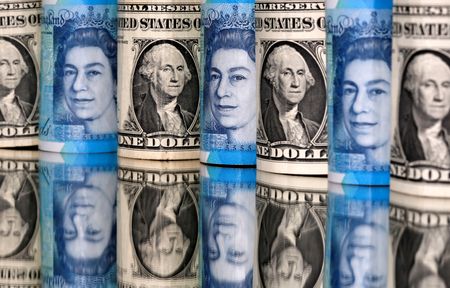
By Kevin Buckland
TOKYO (Reuters) – The safe-haven yen and U.S. dollar rose on Tuesday while the risk-sensitive New Zealand dollar fell with the euro amid escalating worries about both a potential military conflict in Ukraine and a faster pace of Federal Reserve policy tightening.
The Australian dollar rose briefly after strong consumer price numbers boosted the case for a Reserve Bank interest rate increase this year, but then succumbed to the sell-off in riskier assets.
The Fed begins a two-day policy meeting later in the global day, and investors will be anxious for any hints on the timing and pace of rate hikes, as well as about how fast the central bank will shrink its more-than $8 trillion holdings of Treasuries and mortgage debt.
Money markets are priced for a first rate hike in March, with three more quarter-point increases by year-end.
“The case for the Fed potentially following up a March rate rise before the June meeting – even as early as April – is a very compelling one, and there is a risk that the market will still have to reprice,” said Ray Attrill, head of FX strategy at National Australia Bank in Sydney.
“The geopolitical risk has just added a new layer of safe haven support.”
Markets until recently had mostly shrugged off the massing of Russian troops on Ukraine’s borders, but tensions have ratcheted up lately. NATO said it was putting forces on standby and reinforcing eastern Europe with more ships and fighter jets, in what Russia denounced as an escalation of tensions.
ING Bank strategist Francesco Pesole said markets were pricing more of a risk premium into the euro, with fears increasing that Russia’s stand-off with the West over Ukraine could prompt Moscow to curb energy supplies to Europe.
The euro slumped 0.35% to 128.68 yen, approaching the five-week low of 128.42 touched overnight.
Against the greenback, the euro slipped 0.16% to $1.13135.
The dollar declined 0.22% to 113.725 yen, nearing a one-month low of 113.47 touched in the previous session.
The dollar index, which measures the greenback against six major peers, edged up 0.06% to 95.951, after climbing as high as 96.135 overnight for the first time since Jan. 10.
New Zealand’s kiwi dollar dropped 0.37% to $0.6671.
The Aussie fared relatively better, retreating 0.19% to $0.7132. Earlier it leapt as much as 0.45% to $0.7178 after a key inflation gauge surged to a 7 1/2-year peak.
Many analysts contend that such a pace will force the RBA into a rate hike this year, despite Governor Philip Lowe previously maintaining that such an eventuality was extremely unlikely. The central bank meets on Feb. 1 to decide policy.
After the inflation data, TD Securities brought forward its forecast for a rise in the policy rate from a record low 0.1% to 0.25% to August, having previously expected a rise in the the fourth quarter of this year.
“The RBA’s dovish stance is untenable,” TD rates strategist Prashant Newnaha wrote in a client note.
At next week’s meeting, “we expect the RBA’s central forecast will now shift to a hike in 2023, but the RBA will possibly open the door to a rate hike in 2022,” he wrote.
Money markets have long been at odds with Lowe’s dovish stance, and are priced for a rate hike as early as May.
Meanwhile, cryptocurrencies traded weaker, but were well off the lows tested at the start of the week. Bitcoin changed hands at close to $36,000, after dipping below $33,000 on Monday for the first time in six months. It has halved in value since touching a record $69,000 in November.
Smaller rival ether last traded around $2,400, following its dive to a six-month low of $2,160.
(Reporting by Kevin Buckland; Editing by Edwina Gibbs & Simon Cameron-Moore)

